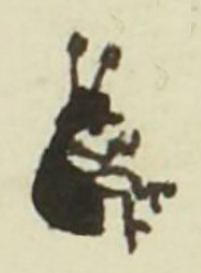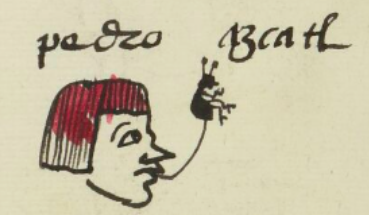Azcatl (MH549v)
This black-line drawing of the simplex glyph for the personal name Azcatl (“Ant,” attested here as a man’s name) shows a profile view of an ant, painted black in its entirety. It is facing toward the viewer's right. It appears to be sitting, with (only) four arms and legs in front of its abdomen and what would seem to be two fingers on each hand and foot. On its head are two mandibles or antennae. For such a small animal, the detail is impressive. This is true, too, of Nahuatl hieroglyphs of many insects and bugs.
Stephanie Wood
The name Azcatl could also be held by Nahua women. A somewhat famous Azcatl Xochitzin was the wife of a ruler of Malinalco, according to Chimalpahin. Another famous Toltec woman name Azcaxochitl married a Chichimec chief called Nopaltzin, according to Rémi Siméon.
Flying ants are a delicacy and part of the Nahua diet. A species in Oaxaca is known today as chicatanas, and they are added to a number of sauces and other dishes. "Ant Hill Place" is the name of an important Nahua altepetl on the western shore of Lake Tetzcoco that was the seat of empire for the Tepaneca. Ants also figure in origin stories.
Stephanie Wood
pedro azcatl
Pedro Azcatl
Stephanie Wood
1560
Jeff Haskett-Wood
insects, insectos, ants, hormigas

azca(tl), an ant, https://nahuatl.wired-humanities.org/content/azcatl
Matrícula de Huexotzinco, folio 549v, https://www.loc.gov/resource/gdcwdl.wdl_15282/?sp=178&st=image
This manuscript is hosted by the Library of Congress and the World Digital Library; used here with the Creative Commons, “Attribution-NonCommercial-ShareAlike 3.0 License” (CC-BY-NC-SAq 3.0).






